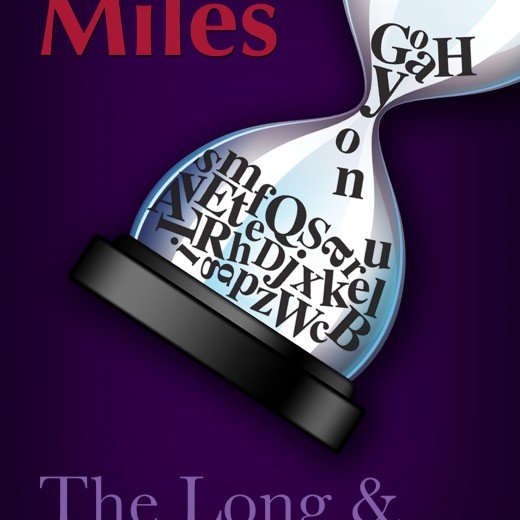The Game of Playful Personification by Wyatt Bessing
 Welcome back to monthly columnist, Wyatt Bessing. A writing coach and teacher, author, Wyatt Bessing shares his fun take on games, play, and how they help our writing. This month Wyatt gives us tips on playful personification. Enjoy!
Welcome back to monthly columnist, Wyatt Bessing. A writing coach and teacher, author, Wyatt Bessing shares his fun take on games, play, and how they help our writing. This month Wyatt gives us tips on playful personification. Enjoy!
***
In fiction, inanimate objects are seldom truly inanimate. Important objects have emotional weight, and your characters will perceive in each object its own spirit and personality. An important part of characterization lies in showing the reader a character’s mindset as he or she interacts with these objects. To me, this is the primary benefit of personification: The implicit comparison made by your viewpoint character tells us something about his or her state of mind.
In A Game of Thrones, George R. R. Martin uses personification to help us understand the naivete of Arya, the youngest daughter of Eddard Stark, as guards stalk her after her father’s arrest. Her battle trainer has just reminded her to watch for hidden language. Striking her during a sparring match, he says, “My eyes and arm shouted out the truth, but you were not seeing.” This image of eyes and arms having mouths, shouting secrets, neatly foreshadows Arya’s upcoming conflict. She has no notion of the political maneuverings around her, or her impending arrest.
Later in the chapter, after narrowly escaping guardsmen and soldiers, she comes to the stables, expecting to find safety. There she encounters a smirking stableboy, and we are shown his “filthy white undertunic peeking out from beneath a soiled jerkin.” This peeking personification creates an image of his clothing actively watching her, doubling the feeling of surveillance as he spies on her. And, again, she misses these not so subtle signs until it is almost too late. “Fear cuts deeper than swords,” is a recurring phrase in the same chapter. And indeed, we see Arya’s fear cutting her deeply, altering her life and perspective in very real ways.
How do you, as a writer, use the tools you notice when you read? Keep a journal and record these devices and clever turns of phrase. Perhaps these cutting fears, peeking undertunics, or shouting arms and eyes have given you some inspiration for creating your own living objects imbued with life by – and reflecting the minds of – your characters.
Playing the Game
Equipment Needed: Two dice. A pad paper and pencil or pen.
Create two lists of eleven items, numbered 2-12. For one list, brainstorm objects or pieces of scenery that might occur frequently in your fiction. For the other, brainstorm verbs that are usually limited to human action. If you’re feeling stuck, you might use some of the nouns and verbs discussed in the previous paragraph (cutting fears, peeking clothes, shouting body parts), or you can borrow a few from my lists below.
2. peek
3. tear
4. bleed
5. laugh
6. cry
7. swim
8. sneak
9. race
10. tickle
11. berate
12. cheer
2. house
3. sun
4. moon
5. clouds
6. trees
7. wind
8. hair
9. car
10. clothes
11. window
12. streetlight
Finally, of course, you’re going to roll your two dice and consult the first list. Note the result, and then roll again, this time on the second list.
Write for ten minutes without stopping, imagining a scene from your Work-in- Progress or in a future work. Don’t think. Just let the words flow out. Let your subconscious mind chew on the surreal connections between the verb and its object. This object need not play a central role in the scene (and, in fact, probably should not). As the stableboy’s undertunic illuminates a part of Arya’s personality, as the fear cuts her more deeply than a sword, allow your noun and action to illuminate psychological depth or develop a subtle shading of personality in your main character.
Write, now! Don’t read further until after you’ve written nonstop for ten minutes!
This is my freewrite, exploring Curtis, my viewpoint character, a hermit living in exile on a beach somewhere in Northern California. I roll a 3 and a 9… a tearing car.
Venturing out of his rocky alcove beneath the cliff, Curtis walks a few paces onto the beach before peering back uphill through the patchy, soupy fog. It’s unlikely anyone will disturb his vision of the quiet hillside today. A dense whiteness has settled, allowing only the occasional glimpse of green pasture, or red tile roof above one of the sleeping beach houses. The scene becomes a solid entity on these days, too inclement for anyone else to come out in it. It’s like a painting, and he the painter, the only living entity in the world. He can do with it as he may: repaint or alter it, redream the entire scene.
Yet now, just as he imagines the possibilities, a car – a red SUV -races down Highway 1, north to south, directly across the center of his vision, tearing his painting apart. That world beyond his own is so fast, a world of people racing through their lives, one appointment to the next. He and his world – here, on this slow beach moving at the speed of erosion – are torn from it completely.
***
 Wyatt Bessing is a writer, writing coach, and learning specialist. His stories and essays have appeared in Bedtime-Story.com, Outsider Ink, national educational assessment materials, and in the anthology Dance, Human Rights, and Social Justice. Through his workshops, website, and blog at wyattgbessing.com, he guides new and experienced writers in crafting more effective, expressive, and striking work. During the day, he works at Star Academy in San Rafael, teaching reading and comprehension skills to students with learning differences in elementary through high school. He lives in Santa Rosa, CA with his wonderful fiance and co-creator, Sarah Laugtug.
Wyatt Bessing is a writer, writing coach, and learning specialist. His stories and essays have appeared in Bedtime-Story.com, Outsider Ink, national educational assessment materials, and in the anthology Dance, Human Rights, and Social Justice. Through his workshops, website, and blog at wyattgbessing.com, he guides new and experienced writers in crafting more effective, expressive, and striking work. During the day, he works at Star Academy in San Rafael, teaching reading and comprehension skills to students with learning differences in elementary through high school. He lives in Santa Rosa, CA with his wonderful fiance and co-creator, Sarah Laugtug.





